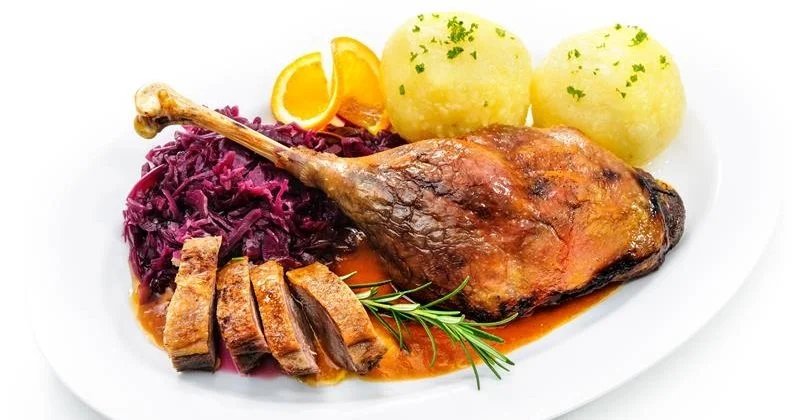November
Czech Traditions in November: A Month of Remembrance, Feasting, and Hunting
As the crisp chill of early winter sets in, November in the Czech Republic is a time of reflection, tradition, and hearty feasting. This month is marked by important cultural and religious observances, as well as celebrations deeply rooted in historical customs. From honoring the departed on All Saints' Day to indulging in St. Martin’s goose, and from the thrill of the hunting season to the communal pig-slaughter feasts, November offers a fascinating glimpse into Czech heritage.
November begins with All Saints’ Day, known in Czech as Dušičky. On November 2nd, Czechs visit cemeteries to honor their deceased loved ones. The practice involves lighting candles, laying flowers, and tidying up gravesites. The flickering lights in cemeteries create a serene, almost mystical atmosphere, especially in the frequent fog as the days get ever shorter.
One of the most cherished November traditions in the Czech Republic is St. Martin’s Day, celebrated on November 11th. St. Martin is associated with generosity and the arrival of winter, and folklore tells that he rode on a white horse, hinting that the first snow should fall around this time. The day is synonymous with roast goose and young St. Martin’s wine. According to legend, St. Martin hid in a goose pen to avoid being ordained as bishop, but the noisy geese betrayed him. As a result, feasting on roast goose became a way to commemorate the day. In the past decade, the tradition of serving goose with red and white cabbage and potato or bread dumplings has returned to Czech pubs and restaurants, although I prefer duck and most often roast my own. Another part of the feast is the opening of St. Martin’s wine (Svatomartinské víno). It’s a young wine similar to France’s Beaujolais Nouveau, and approximately of the same quality (so nothing much, in my humble opinion).
November also marks the peak of hunting season, an important part of rural Czech culture. Historically, hunting was a privilege reserved for the nobility, but today it remains a popular pastime and an essential aspect of game management. Traditional hunting attire, including green jackets and feathered hats, adds a sense of old-world charm to the experience. Organized hunts take place across forests and fields, particularly for wild boar, deer, and pheasants, which soon start appearing on the menus of restaurants and above all in my kitchen. My parents live in a village and throughout the late autumn, I am well supplied with wild boar and deer, and cook up a storm to get through those cold November evenings.
One of the most unique Czech traditions in late autumn is the pig slaughter feast, or zabíjačka. Though modern meat production has made it less common, many rural communities and families still uphold this centuries-old practice. It has also become extremely popular in Prague, with a number of venues hosting these feasts from November through the February. Some only offer the typical pork products, others deliver almost the entire experience, including an accordion player! Signature delicacies include jitrnice (white sausages), jelita (blood sausages), tlačenka (head cheese), škvarky (crispy pork cracklings), ovar (boiled pork with horseradish and mustard), and of course, generous servings of slivovice (plum brandy) to keep warm. This is definitely my favorite November event, and I never miss the first zabíjačka of the year at a pub near my apartment.





